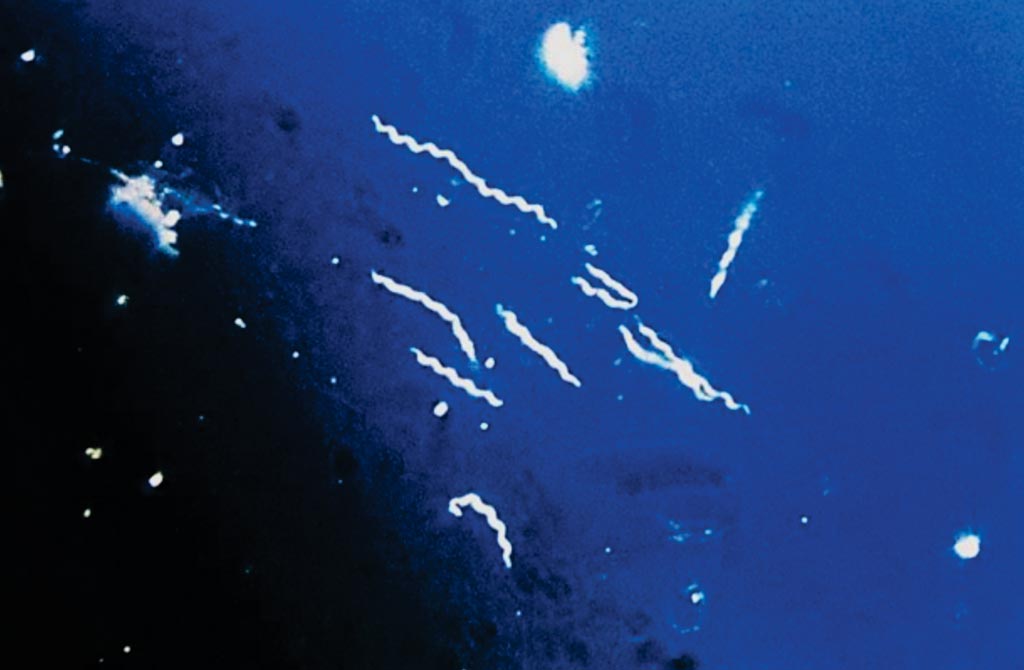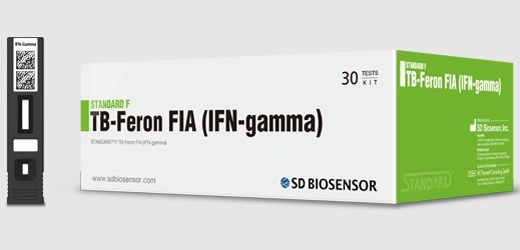New POC Test Quickly Detects Lyme Neuroborreliosis
By LabMedica International staff writers
Posted on 17 Apr 2018
The clinical pictures of borreliosis vary from local skin infection to infections of the central nervous system, joints or the heart. A typical red rash, the so-called erythema migrans lesion, developing and spreading around the tick bite should always be treated with antibiotics without laboratory tests.Posted on 17 Apr 2018
The diagnosis of Lyme neuroborreliosis is always clinical-based, meaning it is based on the symptoms experienced by the patient and the doctor's findings, but laboratory tests are necessary to support the diagnostics. At the moment, the most important laboratory test in the diagnostics of neuroborreliosis is the assay of Borrelia-specific antibodies from the patient's blood and cerebrospinal fluid.

Image: Using darkfield microscopy technique, this photomicrograph, magnified ×400, reveals the presence of spirochete, or \"corkscrew-shaped\" bacteria known as Borrelia burgdorferi, which is the pathogen that causes Lyme disease (Photo courtesy of the CDC).
Microbiologists at the University of Turku (Turku, Finland) have validated a new point-of-care test has been developed in Finland for detecting the Lyme neuroborreliosis spread by ticks. The test makes rapid initiation of antibiotic treatment possible for patients with borreliosis, which reduces the post-treatment symptoms related to the disease. At the same time, unnecessary antibiotic treatments can be avoided.
The company Oy Reagena (Toivala, Finland) developed the new point-of-care test that measures chemokine (C-X-C motif) ligand 13 (CXCL13) concentrations in cerebrospinal fluid, since a high CXCL13 concentration is almost exclusively related to untreated neuroborreliosis. Therefore, the CXCL13 chemokine concentration in the cerebrospinal fluid is a new, important biomarker in the diagnostics of neuroborreliosis. The CXCL13 concentration increases more rapidly in early neuroborreliosis than the antibody concentration in the cerebrospinal fluid, and on the other hand, it declines rapidly after the initiation of antibiotic treatment.
Jukka Hytönen, MD, PhD, an Assistant Professor in Bacteriology, said, “We have demonstrated that this point-of-care test is extremely efficient. As a result, we suggest that the diagnostic practice for neuroborreliosis in Finland would be reorganized so that the CXCL13 concentration would be measured immediately after the lumbar puncture for cerebrospinal fluid. In the current practice, the concentration results may take up to a week, whereas the new point-of-care test provides quick results. It is important to note that a rapidly initiated treatment reduces the post-treatment symptoms related to neuroborreliosis.” The study was published originally on line on February 23, 2018, in the journal Diagnostic Microbiology and Infectious Disease.
Related Links:
University of Turku
Oy Reagena














